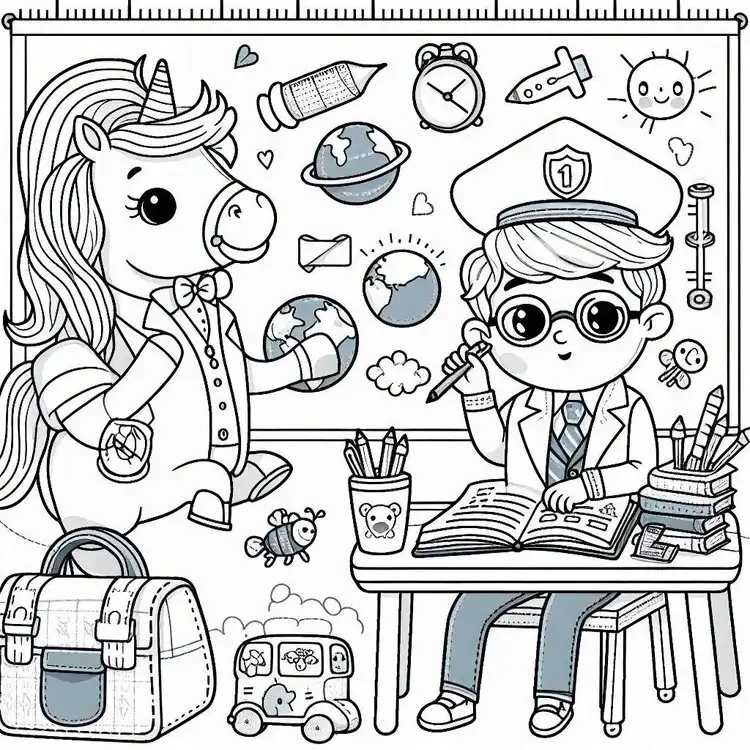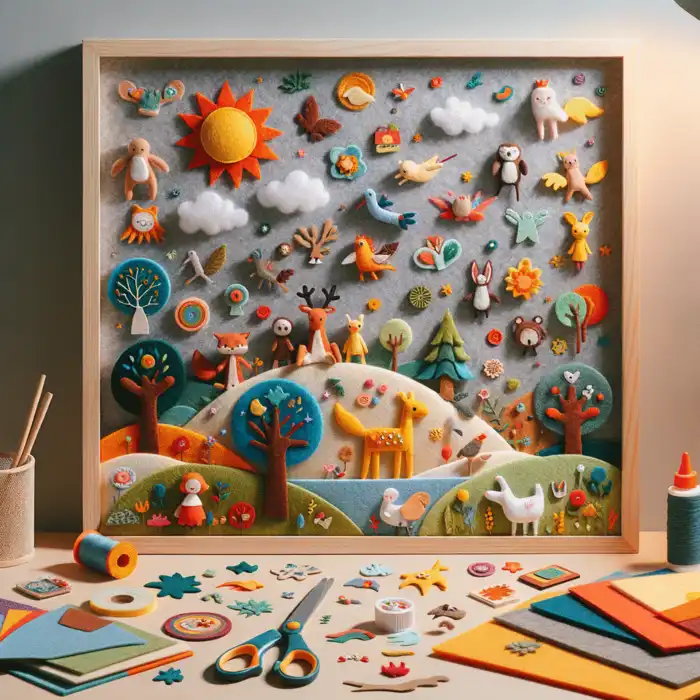
- Crafts & DIY
- Jul 26
2025-04-16
Imagine transforming simple storytelling into an engaging, hands-on experience for your children. A DIY felt board is more than just a craft; it's a tool for creativity, learning, and emotional growth. Get ready to explore how to create your own felt board and the myriad of benefits it offers!
Explore the differences among various felt types and their characteristics below.
TIP: Keep a variety of art supplies on hand to inspire different types of creativity.
Pros: Durable and holds shape well
Cons: More expensive
Pros: Inexpensive and comes in many colors
Cons: Less durable, can fray
Pros: Offers qualities of both wool and acrylic
Cons: May not be as widely available
Have you ever thought about how a simple felt board can spark creativity and learning? A DIY felt board is not just a fun craft; it’s a fantastic educational tool! By using a felt board, children can engage in storytelling, enhance their vocabulary, and develop fine motor skills during playtime. For more creative and educational ideas, check out our article on inspiring creativity through crafts and activities!
Imagine sitting down with your little ones and watching their eyes light up as they create stories using colorful shapes. This tactile experience not only makes learning enjoyable but also promotes interactive play, allowing kids to express their imagination freely. The benefits are endless, fostering both cognitive and emotional growth.
Ready to get started on your felt board adventure? Here’s a list of essential materials you’ll need to make your project a success:
These materials ensure that your felt board is not only functional but also visually appealing. Just imagine how much fun your children will have with their personalized creations!
When it comes to crafting, not all felt is created equal! Here’s a quick comparison of various felt types you can consider for your project:
| Felt Type | Pros | Cons |
|---|---|---|
| Wool Felt | Durable and holds shape well | More expensive |
| Acrylic Felt | Inexpensive and comes in many colors | Less durable, can fray |
| Blended Felt | Offers qualities of both wool and acrylic | May not be as widely available |
Choosing the right type of felt can make a big difference in the outcome of your felt board. Think about the purpose of your board and select accordingly!
Now that you have your materials, let’s talk tools! Having the right tools can make crafting smoother and more enjoyable. Here are some must-have items:
These tools will help you create stunning felt story cutouts with precision and ease. Crafting can be such a rewarding experience, especially when you’re fully equipped to bring your ideas to life!
Using a Cricut Maker is like having a magic wand for your crafting! To get started, first, design your cutouts using the Cricut software. Next, follow these steps:

Once finished, gently peel off the cutouts and prepare for storytelling fun. It’s amazing how this tool simplifies the crafting process while enhancing creativity!
Let’s unleash our creativity! Here are some fun felt patterns and shapes you can use to create engaging story cutouts:
These patterns can bring stories to life, making reading time a delightful experience for both kids and adults! For more seasonal fun, check out our Halloween crafts for kids article for additional inspiration.
Here's a brief recap of the key points discussed so far:
As we wrap up this DIY felt board journey, let’s take a moment to reflect on all the creative possibilities we’ve explored together! Creating a felt board is not just about crafting; it opens the door to imaginative storytelling and interactive learning. With the right materials and a sprinkle of creativity, you can transform your storytelling sessions into engaging experiences for kids and adults alike.
Have you thought about how you can take your felt board to the next level? Themed felt boards are a fantastic way to celebrate holidays and special occasions! Here are some ideas for themes that can bring even more joy to your storytelling:
These themes not only spark creativity but also help kids relate their favorite stories to exciting visuals. So, gather your felt and get started on your themed creations! For more themed fun, we suggest checking out our Christmas coloring pages to enhance the holiday spirit.
If you're eager to dive deeper into the world of DIY felt projects, I’ve got you covered! Here are some fantastic resources that can inspire your next felt adventure:
These resources will not only enhance your crafting skills but also connect you with a vibrant community of fellow crafters! For another engaging activity, check out our article on best toys for two-year-olds.
I’d love to hear about your felt board creations! Have you made any unique designs or themed boards? Sharing your experiences allows us to learn from one another. Consider dropping a comment below or posting your projects on social media with the hashtag #UrbanCanopyCrafts. Together, we can inspire each other!
As you embark on your felt board journey, you might have a few questions. Here are some frequently asked questions and answers to help clarify:
These tips will help you maintain your felt board in great shape for all your storytelling adventures!
If you’re looking to sharpen your crafting skills, why not participate in a workshop? Many local community centers and online platforms offer classes focused on felt crafting. These workshops provide a great opportunity to learn new techniques and meet fellow enthusiasts. Keep an eye out for:
Engaging in these activities will not only enhance your skills but also foster a sense of community, making crafting all the more enjoyable! We also have more information on summer tree care if you are interested.
Here is a quick recap of the important points discussed in the article:
